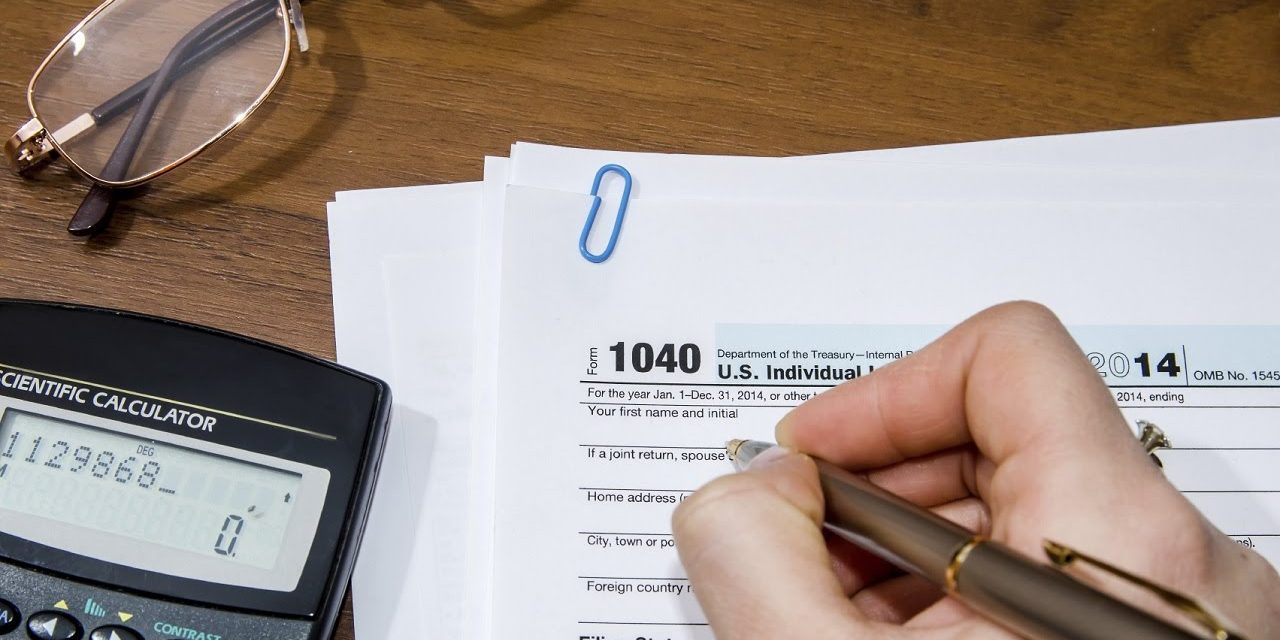Today is Tax Day 2017, a national day of gnashing teeth and rising blood pressure.
Obviously, no one likes to pay taxes. The IRS is such a dirty word that it has become a despised three-letter acronym – no need to spell it out, taxpayers know the enemy when they see it.
Yet, among all the issues this nation faces, taxes are not that big of a deal.
The reality is that current federal income taxes do not represent a burden for average Americans. The “effective” tax rate – the true tax rate, after all exemptions, deductions and credits – for most middle class families is below 10 percent. And many are closer to the 5 percent range.
(Anyone can quickly calculate their effective rate by dividing the amount on Line 56 of their 1040 form by Line 37 – then just move the decimal point two places to the right.)
If more Americans realized what they actually pay to Uncle Sam, the endless refrain for tax cuts, led by talk-radio and TV commentators, would lose its appeal. We now see some evidence of changing times.
A new Gallup poll shows that close to two thirds of people, 61%, say their federal income tax is fair. That’s nearly the highest that number has been in the past 20 years and it represents a significant jump from the 50 percent who said their tax bill is fair just one year ago.
Tax cuts don’t drive the economy
Those polling numbers arise in conjunction with mounting evidence that tax cuts do not drive the economy. Contrary to traditional macroeconomic thinking, several studies have shown that the big tax breaks during the George W. Bush administration accomplished little in terms of economic growth.
What’s more, a new report from the Congressional Research Service that spans six decades of data found that top tax rates for the wealthy “have had little association with saving, investment, or productivity growth.” Past studies cited in the report have suggested that a broad-based tax rate reduction can have “a small to modest, positive effect on economic growth” at most.
At the state level, the failure of tax cuts as an economic engine is far more pronounced. In recent years, several states have slashed taxes without enjoying the expected gains in jobs and growth. The poster child for this new reality is Kansas.
Kansas Gov. Sam Brownback called his large tax cuts a “model” for the nation but instead the plan led to below average job creation and huge budget deficits that forced cutbacks in services, especially K-12 school funding.
In contrast, Minnesota, a high-tax state, boasts of a state budget surplus and one of the lowest unemployment rates in the nation, thanks to an emphasis on education and a skilled workforce. In 2015, it was named the top state for business by CNBC.
Politicians obsessed with tax cuts should be rethinking their approach. At the federal level, a substantial, across the board reduction in income taxes could mean a gain of roughly $20 a week for modest, middle class households. That equals a boost in take-home pay of about 50 cents an hour. In other words, not much.
The real issue is not taxes, it’s wages. It’s cultivating good-paying jobs that would mean dramatic improvements in personal income.
To accomplish that, Congress could have a far-reaching impact by tackling the nation’s two-tiered skills gap.
Two types of skill shortages
Some experts say the U.S. faces a coming shortage of college graduates, particularly in the areas of technology, engineering, science, math and medicine. Other analysts emphasize that the worker shortage is already here for skilled-trades jobs – plumbers, electricians, welders, carpenters – but our floundering vocational education system fails to steer kids in that direction. Critics say the job snobs in the education community have made these career paths uncool.
Based on concerns expressed by employers across the spectrum, it seems both sides are right.
According to Michigan Labor Market Information & Strategic Initiatives, the state estimates a need for 15,000 new skilled-trades workers annually through the next decade, with these jobs paying average wages of $51,000 a year.
Meanwhile, the Lumina Foundation predicts that by 2025, up to 60 percent of jobs paying middle class wages will require a college degree or similar credentials.
Rather than dishing out tax cuts that disproportionately boost the well-to-do, Congress could create a federally funded effort to address the skills gaps, which would pay much bigger dividends to individuals and to the overall economy.
The goal would be a tightly focused program that steers people to college majors in high demand, or to skilled-trades occupations where jobs are plentiful. A greater emphasis on job training and apprenticeships would play a key role.
The beneficiaries would include the unemployed, high school students approaching graduation, college students on the verge of dropping out, and languishing millennials facing an uncertain future.
A wide array of business owners say they’re frustrated on a daily basis with the lack of young people who want to learn a skilled trade or to engage in careers ranging from automotive technicians to heavy equipment operators.
At the same time, millions of recent college grads report that they are underemployed and working in a job not related to their university major. A variety of reasons account for those post-college results. In the long run, most degree-holders achieve far higher incomes and experience far lower unemployment rates than those with no education beyond high school.
The best news is that a career-targeting program would cost relatively little. The average middle income family currently pays about $7.50 a year in federal taxes for a jumble of job training and other employment programs. Surely, we can afford to boost that level of funding.
Imagine each taxpayer dishing out a few extra bucks a year to produce a system that creates millions of jobs paying, let’s say, $60,000 or $70,000 a year. Sounds like a deal that’s too good for America to pass up.



